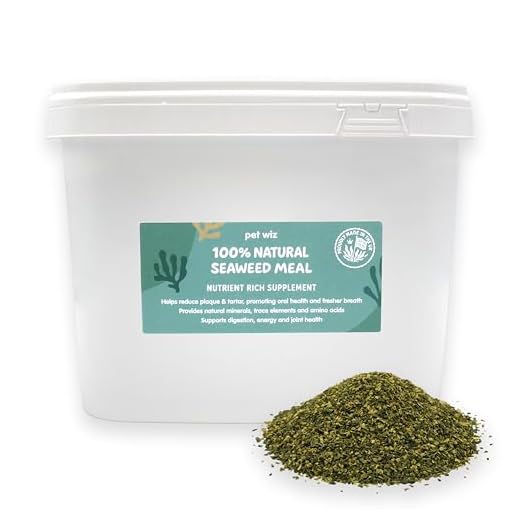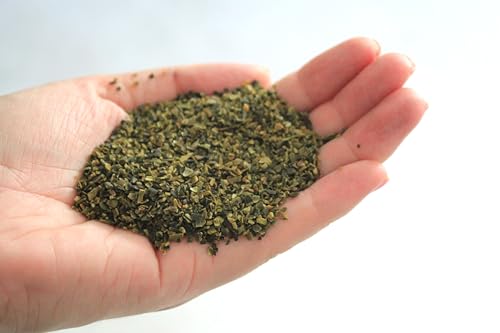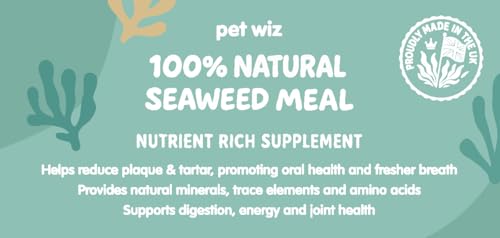




As a dedicated pet owner, I am always searching for the best nutrition options for my furry companion. Over the years, I have come to understand that the quality of dog food can significantly impact my pet’s health and well-being. This realisation led me on a journey to discover the most nutritious and safe dog food options available, and I found that low-temperature cooked dog food stands out as one of the best choices.
Low-temperature cooking preserves the essential nutrients in the ingredients, ensuring that the food retains its natural goodness. Unlike high-temperature processed foods, which can degrade vitamins and minerals, low-temperature cooking methods maintain the integrity of these vital nutrients. This means that my dog gets the full benefits of the ingredients, leading to better health, more energy, and a shinier coat.
Moreover, low-temperature cooking reduces the risk of harmful compounds forming in the food. When dog food is cooked at high temperatures, it can create carcinogens and other toxic substances that are detrimental to my dog’s health. By choosing food cooked at low temperatures, I can be confident that I am providing my pet with a safer and healthier diet.
In this article, I will delve into the specifics of why low-temperature cooking is superior, explore the best options available on the market, and provide tips on how to choose the right dog food for your beloved pet. Join me as we explore the world of low-temperature cooked dog food and discover how it can transform your dog’s diet and overall well-being.
Best Dog Food Cooked at Low Temperature: A Comprehensive Guide
As a dedicated pet owner, ensuring my dog receives the best nutrition is a top priority. Over the years, I’ve learned that the way dog food is prepared can significantly impact its nutritional value. Cooking dog food at lower temperatures preserves more of the essential nutrients, providing my furry friend with a healthier, more balanced diet.
In this guide, I will share my insights and experiences on choosing and preparing dog food cooked at lower temperatures. By understanding the benefits and knowing what to look for, you can make informed decisions that support your dog’s overall health and well-being.
Benefits of Low-Temperature Cooking for Dog Food
Cooking dog food at lower temperatures, typically below 100°C, helps retain vital nutrients that are often lost in high-heat cooking processes. Here are some key benefits:
- Preserved Nutrients: Vitamins, minerals, and antioxidants remain intact, ensuring your dog gets the maximum nutritional benefit.
- Better Digestibility: Low-temperature cooking makes proteins easier to digest, promoting better gut health for your pet.
- Improved Taste: Foods cooked gently often retain more of their natural flavours, making meals more appealing to picky eaters.
Choosing the Right Ingredients
When preparing dog food at home, selecting high-quality ingredients is crucial. Here are some tips:
- Fresh Meat: Use lean meats such as chicken, turkey, or beef. Ensure it’s free of hormones and antibiotics.
- Vegetables: Opt for nutrient-dense vegetables like spinach, carrots, and sweet potatoes. These provide essential vitamins and fibre.
- Whole Grains: Brown rice or quinoa can be excellent sources of carbohydrates and energy for your dog.
- Healthy Fats: Incorporate small amounts of fish oil or flaxseed oil for a healthy coat and skin.
Cooking Techniques for Maximum Nutrient Retention
To achieve the best results, use cooking methods that maintain lower temperatures:
- Slow Cooking: Using a slow cooker allows food to cook gently over several hours, preserving nutrients effectively.
- Steaming: Steaming vegetables helps retain their vitamins and minerals without losing them to boiling water.
- Poaching: Poaching meat in broth or water at low temperatures ensures it stays moist and nutritious.
By following these guidelines, you can provide your dog with delicious, nutritious meals that support their health and longevity. Remember, a little extra effort in preparation goes a long way in ensuring your furry friend enjoys a balanced, wholesome diet.
Why Cooking Dog Food at Low Temperatures is Beneficial
When I first started researching the best ways to prepare nutritious meals for my dog, I discovered that the method of cooking plays a significant role in preserving the quality of the ingredients. Cooking at low temperatures has proven to be a superior method for maintaining the essential nutrients in dog food. Unlike high-temperature cooking, which can degrade vital vitamins and minerals, low-temperature cooking ensures that these nutrients remain intact, providing my dog with the full benefits of the food.
Another critical aspect is the preservation of natural flavours and textures. When food is cooked slowly and at lower temperatures, the natural taste and consistency of the ingredients are maintained. This not only makes the food more palatable for my dog but also ensures that he is getting a diet as close to its natural state as possible. This approach has led to noticeable improvements in his overall health and wellbeing.
Key Benefits of Low-Temperature Cooking for Dog Food
- Retention of Nutrients: Low-temperature cooking helps preserve essential vitamins, minerals, and enzymes that are often destroyed by high heat. This means my dog gets more out of his meals in terms of nutrition.
- Improved Digestion: Foods cooked at lower temperatures are easier for dogs to digest. This gentle cooking process breaks down food in a way that is more aligned with their natural digestive capabilities.
- Enhanced Flavour and Palatability: By retaining natural juices and flavours, low-temperature cooking makes the food more appealing to dogs, encouraging better eating habits.
- Reduced Risk of Toxins: High-temperature cooking can produce harmful substances such as advanced glycation end-products (AGEs) and acrylamides. Cooking at lower temperatures minimises the formation of these potentially harmful compounds.
- Better Protein Utilisation: Proteins are crucial for a dog’s health, and cooking at low temperatures ensures that these proteins are not denatured, making them more available and beneficial to the dog.
Incorporating low-temperature cooking into my dog’s diet has been a game-changer. The overall benefits, from better nutrient retention to improved flavour, have had a profound impact on his health. This method requires a bit more time and effort, but seeing the positive changes in my dog’s vitality and happiness makes it all worthwhile.
Key Benefits of Low Temperature Dog Food for Your Pet’s Health
I’ve recently discovered the numerous advantages of feeding my dog food that is prepared at low temperatures. Unlike traditional high-heat cooking methods, which can strip away essential nutrients, low-temperature cooking helps to preserve the natural goodness in the ingredients. This means my dog gets a more nutrient-dense meal with each serving.
Since switching to this type of diet, I’ve noticed significant improvements in my dog’s overall health and vitality. Below, I’ve outlined some specific benefits that I’ve observed, which might help you understand why low-temperature cooked dog food could be a great choice for your furry friend.
Enhanced Nutrient Retention
One of the primary benefits of low-temperature cooking is the retention of essential nutrients. High-heat methods can destroy vitamins and minerals, whereas low-temperature processes keep them intact. This ensures that my dog gets the maximum nutritional value from each meal, contributing to better overall health.
Improved Digestion
Low-temperature cooking helps in breaking down food into a more digestible form. My dog has experienced fewer digestive issues since transitioning to this diet. The gentle cooking process preserves the natural enzymes in the food, aiding in better digestion and nutrient absorption.
- Better skin and coat condition: The preserved nutrients, especially fatty acids, have improved my dog’s skin and coat, making it shinier and healthier.
- Boosted immune system: With a higher nutrient intake, my dog’s immune system has become stronger, leading to fewer illnesses.
- Increased energy levels: The nutrient-dense food provides sustained energy, keeping my dog active and playful throughout the day.
Natural Flavours and Enhanced Palatability
Cooking at low temperatures retains the natural flavours of the ingredients. This has made mealtime more enjoyable for my dog, as the food tastes better and is more appealing. I no longer have to coax my dog into eating, as he eagerly anticipates his meals.
Fewer Additives and Preservatives
Another significant advantage is that low-temperature cooked dog food typically contains fewer artificial additives and preservatives. This reduces the risk of adverse reactions and allergies, ensuring a cleaner and more natural diet for my pet.
Overall, the switch to low-temperature cooked dog food has been incredibly beneficial for my dog’s health. From better nutrient retention to improved digestion and enhanced palatability, the positive changes have been remarkable. If you’re considering a dietary change for your pet, this method is definitely worth exploring.
Choosing the Ideal Low-Temperature Cooked Dog Food
When it comes to selecting the best food for my dog, I’ve found that low-temperature cooked options provide a perfect balance of nutrition and taste. Cooking at lower temperatures preserves the integrity of the ingredients, ensuring my furry friend gets all the essential nutrients without any harmful additives.
The challenge, however, lies in identifying which brand or type of dog food meets these criteria. Over time, I’ve developed a method to evaluate and choose the best low-temperature cooked dog food that caters to my pet’s specific needs.
Key Factors to Consider
Ingredient Quality: The first thing I check is the ingredient list. I look for whole foods like fresh meats, vegetables, and grains. High-quality ingredients ensure that my dog gets the necessary proteins, vitamins, and minerals.
Cooking Process: Not all dog foods are cooked the same way. I prefer those that explicitly state their low-temperature cooking process. This method retains more nutrients compared to high-temperature cooking, making the food healthier for my pet.
- Meat Sources: I opt for foods with named meat sources like chicken, beef, or lamb. Avoiding vague terms like “meat meal” or “animal by-products” is crucial.
- Vegetables and Grains: Including a variety of vegetables and grains in the diet ensures a balanced intake of carbohydrates, vitamins, and fibres.
Preservatives and Additives: I steer clear of foods with artificial preservatives, colours, and flavours. Natural preservatives like tocopherols (vitamin E) and ascorbic acid (vitamin C) are much better for my dog’s health.
- Check for Recalls: Before making a final decision, I always look up any recent recalls of the brand. This gives me confidence in the safety and reliability of the food.
- Read Reviews: I find it helpful to read reviews from other pet owners. Their experiences often provide insights that aren’t immediately obvious from the packaging.
By considering these factors, I can ensure that I am choosing a low-temperature cooked dog food that is both nutritious and safe for my pet. This thoughtful approach helps keep my dog healthy and happy, enjoying meals that are as beneficial as they are delicious.
Leading Brands of Low Temperature Cooked Dog Food in 2024
As a pet owner who prioritises the health and well-being of my dog, I’ve been delving into the world of dog food cooked at low temperatures. This method of preparation preserves essential nutrients and enhances the overall quality of the food, ensuring that my furry friend receives the best possible diet. In 2024, several brands stand out in this category, offering exceptional products that align with this philosophy.
Choosing the right brand can be overwhelming, given the myriad of options available. However, after thorough research and personal experience, I’ve narrowed down a few brands that truly excel in providing nutritious and delicious low-temperature cooked dog food.
Notable Brands for Nutrient-Packed Low Temperature Cooked Dog Food
-
Nom Nom
Nom Nom has revolutionised the way we think about pet nutrition. Their commitment to using fresh, whole ingredients and cooking them at lower temperatures ensures that each meal is packed with the vital nutrients that dogs need. The customisable meal plans tailored to individual dietary needs make it a top choice for discerning pet owners.
-
The Farmer’s Dog
With an emphasis on quality and transparency, The Farmer’s Dog delivers meals that are gently cooked to preserve the integrity of the ingredients. Their recipes, crafted with input from veterinary nutritionists, provide balanced, species-appropriate nutrition. This brand stands out for its dedication to sustainable sourcing and eco-friendly packaging.
-
JustFoodForDogs
Known for their science-based approach to pet nutrition, JustFoodForDogs uses low-temperature cooking methods to retain the maximum amount of nutrients in their food. They offer a variety of recipes that cater to different health requirements and life stages, ensuring that every dog can benefit from their high standards of food quality.
-
Spot & Tango
Spot & Tango’s unique approach to dog food involves slow-cooking their fresh ingredients to maintain optimal nutritional value. Their UnKibble line is particularly innovative, providing the convenience of dry food with the benefits of low-temperature cooking. Each meal is formulated to meet AAFCO standards, making it a reliable choice for health-conscious pet owners.
These brands have set themselves apart by focusing on the benefits of low-temperature cooking, ensuring that each bite is as nutritious as it is delicious. By choosing any of these options, pet owners can feel confident that they are providing their dogs with the best possible diet in 2024.
Delicious and Nutritious Homemade Dog Food: Low Temperature Cooking
As a dog owner, I have always been concerned about the quality of food my furry friend consumes. After researching extensively, I discovered that preparing homemade meals for my dog using low-temperature cooking methods ensures that the nutrients remain intact, providing a healthier and tastier option.
Low-temperature cooking not only preserves essential vitamins and minerals but also enhances the flavours, making the meals more appealing to our pets. The following recipes are some of my favourite ways to create nutritious and delicious meals for my dog, ensuring he receives all the necessary nutrients while enjoying every bite.
Chicken and Vegetable Medley
This recipe combines lean protein with a variety of vegetables, providing a balanced meal for your dog.
- Ingredients:
- 500g chicken breast, cubed
- 1 cup carrots, diced
- 1 cup green beans, chopped
- 1 sweet potato, cubed
- 2 tablespoons olive oil
- Instructions:
- Preheat your oven to 80°C (176°F).
- In a large mixing bowl, combine the chicken, carrots, green beans, and sweet potato.
- Drizzle the olive oil over the mixture and toss to coat evenly.
- Spread the mixture in a single layer on a baking tray lined with parchment paper.
- Bake for 2 hours, stirring halfway through to ensure even cooking.
- Allow the food to cool completely before serving it to your dog.
Beef and Quinoa Delight
This recipe features lean beef and quinoa, providing a high-protein, nutrient-dense meal for your canine companion.
- Ingredients:
- 500g lean beef, minced
- 1 cup quinoa, rinsed
- 1 cup spinach, chopped
- 1 carrot, grated
- 1 tablespoon coconut oil
- Instructions:
- Preheat your oven to 80°C (176°F).
- In a large mixing bowl, combine the minced beef, quinoa, spinach, and carrot.
- Melt the coconut oil and drizzle it over the mixture, then stir well to combine.
- Transfer the mixture to a baking dish, spreading it out evenly.
- Bake for 2-3 hours, checking periodically and stirring to ensure even cooking.
- Let the dish cool completely before portioning it out for your dog.
By preparing these meals at home, I ensure that my dog enjoys fresh, wholesome food, free from unnecessary additives and preservatives. Cooking at low temperatures preserves the integrity of the ingredients, providing my dog with the best possible nutrition while catering to his taste buds.
Common Mistakes to Avoid When Preparing Dog Food at Low Temperatures
Cooking dog food at low temperatures can be a great way to preserve nutrients and ensure that your furry friend is getting the best possible nutrition. However, there are several pitfalls that can undermine your efforts and potentially harm your dog. It’s essential to be aware of these mistakes to ensure your homemade dog food is both safe and nutritious.
By avoiding these common errors, you can improve your cooking methods and provide a healthier diet for your dog. Below are some key points to keep in mind during the preparation process.
Errors to Watch Out For
- Not Using Fresh Ingredients: Always ensure the ingredients you use are fresh and of high quality. Spoiled or old ingredients can introduce bacteria and toxins that low-temperature cooking might not eliminate.
- Incorrect Storage: Even if you cook the food correctly, improper storage can lead to contamination. Store the food in airtight containers and refrigerate or freeze it promptly to prevent bacterial growth.
- Ignoring Nutritional Balance: It’s crucial to balance proteins, carbohydrates, fats, vitamins, and minerals. Consult a veterinary nutritionist to make sure your recipes meet your dog’s nutritional needs.
- Overcooking: While low temperatures are generally good, cooking for too long can still degrade essential nutrients. Follow recipes and cooking times carefully to retain the food’s nutritional value.
- Using Harmful Ingredients: Some human foods are toxic to dogs. Avoid ingredients like onions, garlic, grapes, and chocolate. Research and adhere to dog-safe ingredients.
- Not Monitoring Temperature: Maintaining the correct low temperature is critical. Too low, and you might not kill harmful bacteria; too high, and you lose valuable nutrients. Use a reliable food thermometer to check the temperature regularly.
- Lack of Variety: Dogs need a variety of nutrients, which can’t be provided by a single type of food. Rotate ingredients to ensure a well-rounded diet.
By paying attention to these details, you can avoid the most common pitfalls associated with cooking dog food at low temperatures. This careful approach will help ensure your dog enjoys meals that are not only delicious but also nutritionally complete and safe.
FAQs About Low Temperature Cooking for Dog Food
In this section, we address some frequently asked questions regarding cooking dog food at low temperatures.
1. Is low temperature cooking safe for my dog?
Yes, cooking dog food at low temperatures can be safe, as long as it’s done properly. It’s essential to ensure that the food reaches the appropriate internal temperature to kill any harmful bacteria while still preserving the nutritional value of the ingredients.
2. What are the benefits of low temperature cooking for dog food?
Low temperature cooking can help retain more nutrients in the ingredients compared to high-heat methods, which can degrade certain vitamins and minerals. It also allows for better preservation of the natural flavors and textures of the ingredients, resulting in a tastier and more appetizing meal for your dog.
3. How do I know if I’m cooking the dog food at the right temperature?
Using a food thermometer is the most reliable way to ensure that you’re cooking dog food at the correct temperature. Make sure that the internal temperature of the food reaches at least 160°F (71°C) to kill any harmful bacteria while still maintaining the nutritional integrity of the ingredients.
4. Can I cook all types of dog food at low temperatures?
While many types of dog food can be cooked at low temperatures, some recipes or ingredients may require higher temperatures for proper cooking or to eliminate certain pathogens. It’s essential to follow specific guidelines for each recipe and consult with a veterinarian or pet nutritionist if you have any concerns about the cooking method.
5. Are there any downsides to cooking dog food at low temperatures?
One potential downside of low temperature cooking for dog food is that it may take longer than high-heat methods. Additionally, certain ingredients may not achieve the desired texture or flavor when cooked at low temperatures. However, with proper planning and experimentation, you can often overcome these challenges to create nutritious and delicious meals for your dog.
In conclusion, cooking dog food at low temperatures can be a safe and effective way to provide your furry friend with nutritious and tasty meals. By following proper cooking guidelines and consulting with experts when needed, you can ensure that your dog receives all the benefits of a carefully prepared diet.
Best Dog Food Cooked At Low Temperature
Features
| Part Number | Qsweet |
| Model | TRTAZ11A |
| Size | 785 g (Pack of 12) |
| Price history for Royal Canin Low Fat Dog Food 410g | |
|---|---|
|
Latest updates:
|
|
Features
| Is Adult Product | |
| Release Date | 2024-11-16T00:00:01Z |
| Language | English |
| Number Of Pages | 92 |
| Publication Date | 2024-11-16T00:00:01Z |
| Format | Large Print |
Features
| Model | PW-C4 |
| Warranty | 1 year |
| Color | Green |
| Size | 5kg |
Features
| Part Number | 8710255174761 |
| Model | 8710255174761 |
| Size | 12 kg (Pack of 1) |
| Language | English |
Features
| Part Number | 12231701 |
| Model | 12231701 |
| Color | transparent |
| Release Date | 2014-05-23T00:00:01Z |
| Size | 1 count (Pack of 1) |
| Price history for Beta Adult Chicken Dry Dog Food 14Kg | |
|---|---|
|
Latest updates:
|
|
Features
| Is Adult Product | |
| Release Date | 2025-05-17T00:00:01Z |
| Language | English |
| Number Of Pages | 213 |
| Publication Date | 2025-05-17T00:00:01Z |
Features
| Is Adult Product | |
| Release Date | 2025-04-27T00:00:01Z |
| Language | English |
| Number Of Pages | 203 |
| Publication Date | 2025-04-27T00:00:01Z |
Q&A:
Why is cooking dog food at low temperature beneficial?
Cooking dog food at low temperature helps preserve the nutritional integrity of the ingredients, ensuring that vital nutrients are not lost during the cooking process.
What are the advantages of feeding dogs food cooked at low temperature?
Feeding dogs food cooked at low temperature can lead to better digestion, increased nutrient absorption, and overall improved health due to the retention of nutrients.
Can cooking dog food at low temperature enhance its flavour?
Yes, cooking dog food at low temperature can enhance its flavour by allowing the natural flavours of the ingredients to develop slowly without being altered or destroyed by high heat.
Is dog food cooked at low temperature suitable for all breeds and ages?
Yes, dog food cooked at low temperature can be suitable for all breeds and ages, providing a nutritious and easily digestible option for dogs with varying dietary needs.




































